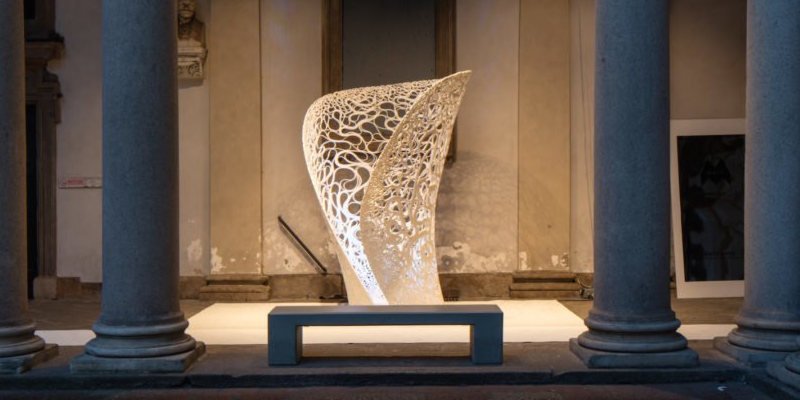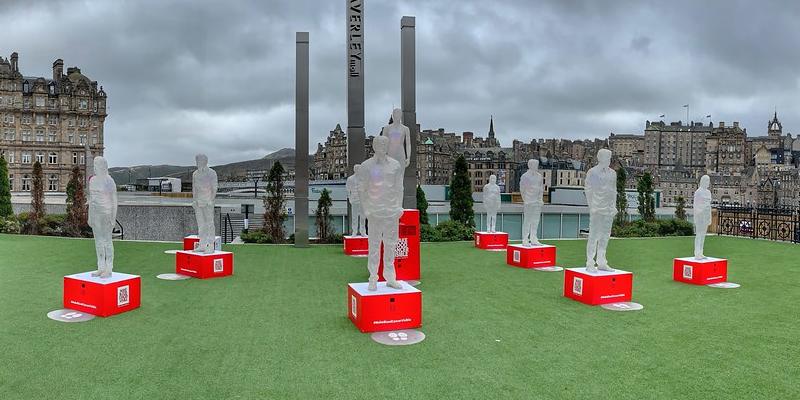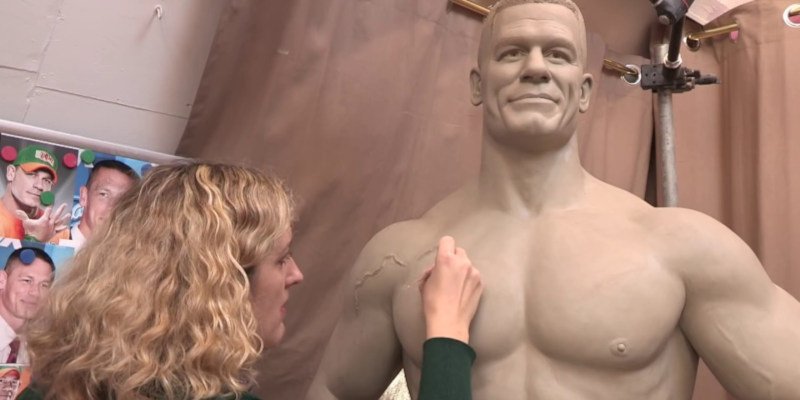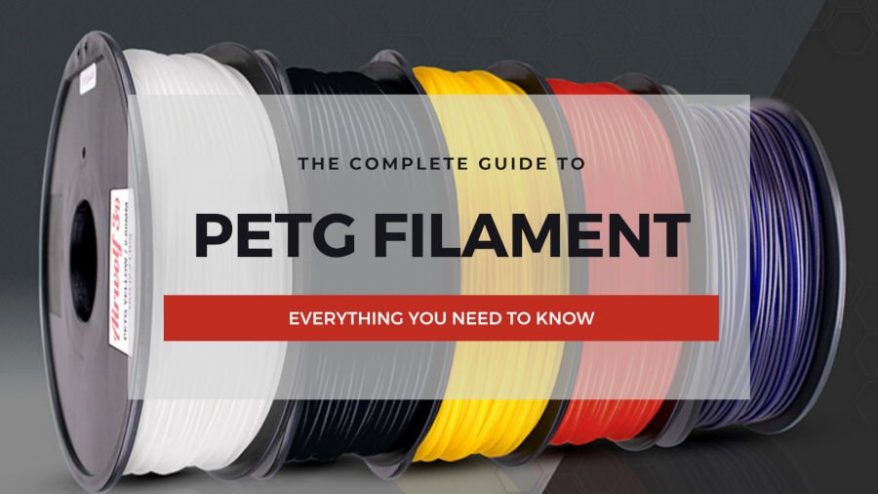
3D Printed Art: How 3D Printing is Empowering Artists’ Creativity


At 3DSourced we’ve covered everything 3D printing and 3D since 2017. Our team has interviewed the most innovative 3D printing experts, tested and reviewed more than 20 of the most popular 3D printers and 3D scanners to give our honest recommendations, and written more than 500 3D printing guides over the last 5 years.
Philip Barcio, an art journalist with Ideelart magazine, recalled a joke he heard during an art opening. “How do you know you are looking [at] a piece of 3D printed art?” The answer: “Because everybody tells you.”
This comment could come across as just a snarky put down; however, it does give us an insight into the heights with which 3D printing is currently held within the artistic world.

To look at the joke pessimistically, it is true that 3D printed art does tend to draw attention to itself simply by virtue of it being a new, and therefore exciting, technology. Barcio articulated this frustration by claiming that:
“3D printers are just tools, no different in their nature than, say, projectors. I have never had someone walk up to me in a gallery, point to a drawing and say, “That was made using a projector.”
And yet, this is exactly what is currently happening with 3D printed artwork, the medium itself captures attention. So, to look at the joke from another perspective. What has 3D printing done to capture the art world’s attention like this? How are people using the technology now? And what future innovations are sparking people’s imaginations? Well, as we look at some examples of 3D printed art projects, we should begin to see what exactly 3D printing has done for art and artists.
3D Printing Makes Sculpting More Accessible
Sculptures are likely to be the first application thought of when imagining 3D printed art. After all, if a sculpture is defined as a three-dimensional artistic form, then it could be argued that all decorative 3D prints are technically sculptures.
Most 3D printed sculptures don’t necessarily have to be produced using 3D printing, with the same objects able to be easily fabricated conventionally too. However, this doesn’t mean that 3D printing hasn’t brought new opportunities to the field.
Fluxaxis: Making Blood Cancer Visible
Fluxaxis, a 3D printing company, were asked to be involved in an art installation to raise awareness of blood cancer. Their client, Windsor Workshop, intended to produce a series of life-sized human statues for the UK’s 2018 “Making Blood Cancer Visible” campaign.

Fluxaxis’s contribution was to 3D sculpt and print two statues to act as the installation’s master molds. Windsor Workshop would then use these masters to create 10 transparent polyester resin statues. When displayed, these ten statues would be fitted with LEDs, allowing them to glow internally.
This project is a good example of something that could be achieved relatively straightforwardly without 3D printing. Large sculptures and statues have been produced without 3D printing since antiquity. Windsor Workshop could have used many fast and affordable modern methods, including simply sculpting with clay over a metal skeleton, a method that has literally been used for thousands of years, and is still widely used today.

However, by deciding to use 3D printing, Windsor Workshop were able capitalize on its superior speed and price. It only took Fluxaxis 8 hours to print each master sculpture. In comparison, most life-sized sculptures take a matter of weeks to complete by hand. Additionally, this faster production contributed to making the project far more affordable. Commissioning a large 3D print can cost thousands of dollars, an affordable option when compared to hand-made sculptures which rarely cost less than $30,000 each.
So, although 3D printing wasn’t necessarily required here, it did allow the project to be printed affordably, and all inside of a day!
It’s Shaken the Art Reproduction Industry
Outside of creating original art, 3D printing has found use in reproducing existing artworks. It’s widely known that 3D printing can be used to recreate classic sculptures and ancient models. A notable example of this came when ISIS controlled the Palmyra region of Syria in 2015. They severely damaged two ancient busts in their efforts to destroy the city’s heritage sites.
Using 3D printing, the busts were repaired in Italy, and were successfully returned to Syria in 2017. However, what is less well-known about the technology, is that 3D printing can now be used to recreate almost perfect reproductions of famous paintings, a medium usually thought of as only having two dimensions.

VerusArt: 3D Printing Paintings
Conventional prints of both classical and modern paintings have always been readily available. However, due to their nature as 2D prints, the results have always been rather flat… Whilst two dimensions can faithfully capture the vision of most paintings, it can miss much of the detail in highly textured pieces.
Monet and Van Gogh are well known for their use of thick layers of paint and heavy brush strokes, with Van Gogh’s “Starry Night” often observed to appear different to its reproductions.

This is where 3D printing entered the scene. In 2016, art print company VerusArt began 3D printing classical artworks in collaboration with the National Gallery of Canada, drawing a lot of attention to itself in the process.
Their process is much like any other 3D printing reproduction; a detailed scan of the original painting is made, these scans are then converted into 3D models, and these models are then 3D printed. Finally, these 3D printed artworks are taken to a museum curator to be compared to the original and ultimately approved.
VerusArt has produced multiple projects since, with their prints available for purchase online. So, assuming that you have a few thousand dollars to hand, you too could own a version of Monet’s “Stormy Sea” that you can actually touch!
The implications of 3D printing here could be industry changing, with the biggest implication being the standard format of all art reproductions becoming 3D prints. Paul Lindahl, CEO of Arius Technology, a company within VerusArt, stated that “we are ready to lead the transformation of the multi-billion-dollar fine art reproduction industry from its 2D past into a 3D future, changing the way people from around the world experience art.”

New Generation of 3D Printing Artists
Although 3D prints can take on a variety of shapes, they are often designed with characteristics that set them apart as “3D printed” versions of their sector. For example, 3D printed high fashion often features highly geometric patterns and shapes that are difficult to achieve without the technology.
Similarly, 3D printed furniture is often designed to have no joints or seams. Of course, 3D printed fashion and furniture can be designed to look more conventional, however they have still retained an aesthetic that can be regarded as their own.
Wider 3D printed art hasn’t yet created niche aesthetics like these specific forms, but that doesn’t mean that there aren’t projects that utilize the technology in a way that is hard to imitate.
Gilles Azzaro and 3D Voiceprinting
Gilles Azzaro is a digital artist most famous for his “Voiceprinted” creations. His process involves taking an audio recording, then modeling a digital sculpture based on its waveform. This model is then 3D printed to create a voiceprinted sculpture. The final sculpture resembles rolling hills, and incorporates a built-in laser that will track along the waveform whilst audio is played.

Gilles’s work has been criticised for not actually being able to playback the waveform as sound. The tracking laser could give audiences the impression that it was scanning and playing the waveform in real-time, when in reality, the original recording is simply being played through a speaker in time with the laser.
This criticism is not unique to 3D waveforms, with 2D waveform art having been criticised for the same thing. Notably, various companies have offered customers waveform tattoos. The impression given being that the various apps scan and then play the waveforms in real-time; in reality, it just detects the image and plays the customer’s original recording from the company database. This revelation reduces the app’s function to something the customer could have easily done for themselves using voice memos.
Despite this criticism, Gilles’s artwork is still highly praised for the accuracy with which it captures and presents audio, something he credits to his use of 3D printing. Gilles has stated that recreating these voices so precisely wouldn’t have been possible conventionally and could only really be achieved through 3D printing:
“3D printing has allowed me to get the definition I wanted to get this tangible audio recording. This is the only tool that allowed me to materialise the invisible.”
Gilles Azzaro

Looking to the future of 3D Printed Art
What is or isn’t art has, and likely always will, be up for debate. It wouldn’t be surprising if the first human cave painting was criticised for “not really capturing the essence of the antelope.” So, let’s instead look at what the continued integration of 3D printing could do to art and artists around the world.
Is 3D printed art really art? Or Just Another tool?
Currently, 3D printing is used mainly as a tool, with its use largely going unnoticed unless disclosed. However, as its popularity grows, could it eventually develop its own artistic niche, and stand shoulder to shoulder with established forms such as painting or sculpting?
Whether or not 3D printed art deserves its own niche lays within the eyes of the beholder, however, there is evidence that popular opinion is trending towards this.
Artists such as Gilles Azzaro have already set a precedent for 3D printing creators to be accepted as artists, rather than say, engineers. Additionally, although snarky, the joke that Philip Barcio overheard reveals that there is already a willingness to accept 3D printing as a new form, rather than just an interesting addition to the toolbox.

If 3D printing continues to trend into its own form, we could see the emergence of more artists who specialize exclusively in 3D printing. This in turn could result in more 3D printing exclusive collections and exhibitions, and ultimately, the establishment of 3D printing as its own artistic niche.
Could it Shift an Entire Sector’s Style?
Another, arguably more impactful speculation, is what effect 3D printing will have once it can perfectly replicate 3D objects. Currently, objects can be scanned and 3D printed to produce highly accurate copies of existing artworks, with the technology continuing to improve year by year.
When photography became able to perfectly capture 2D images, it caused a discernible shift in the field of painting, with painters moving away from realism and into more abstract styles. With this precedent set, and assuming that both 3D scanning and 3D printing technology continues to become more accurate, then it’s possible that we’ll see a similar reaction with 3D art.

If any object in the world can be reproduced perfectly, will we see the entire sculpture industry shift towards original designs, with fewer and fewer artists interested in sculpting flowers or portraits? Imagine if the next time your try to redecorate your garden, you find that nobody’s selling gnomes or aluminum birds?
A Final Word
Whether or not 3D printing will cause a massive shift in artistic style, or whether or not it will become its own niche, can only be speculated on. What is certain however, is that 3D printed art is only becoming more prevalent amongst both art and artists every year, and it doesn’t look to be stopping any time soon.



















